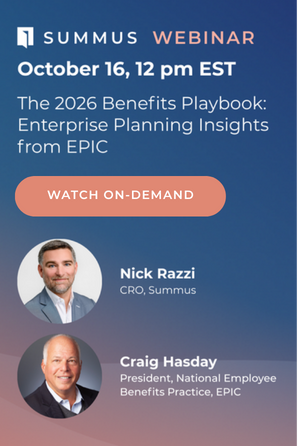Managing rising costs remains one of the most pressing challenges for HR and benefits leaders. Yet while attention often focuses on high-cost claims or chronic disease management, there’s a less visible, but equally costly, driver of spend: overuse and redundant care.
At first glance, more care may seem like better care. But in reality, unnecessary MRIs, duplicate specialist visits, low-value surgeries, and repetitive testing aren’t just wasteful—they’re risky, expensive, and a growing liability for employers.
Addressing this issue is crucial to enhancing outcomes, lowering costs, and restoring employee trust in healthcare.
What is Overuse and Redundant Care?
Overuse refers to medical services that provide little or no benefit to patients. Think antibiotics for viral infections, imaging that doesn’t change the care plan, or surgeries that could be avoided with more conservative treatment.
Redundant care, on the other hand, often stems from poor coordination. Multiple providers order the same tests, or a patient is referred from one specialist to another without clear clinical guidance. These inefficiencies drive up claims, frustrate employees, and strain budget allocations for benefits.
According to industry estimates, up to 30% of U.S. healthcare spending may be considered waste, and overuse is a major contributor. (source)
Why It’s a Problem for Employers
HR and benefits leaders are feeling the pressure from every angle: rising premiums, employee dissatisfaction, and increased scrutiny over benefits ROI. Overuse and redundant care contribute directly to these challenges by:
- Driving up total cost of care with unnecessary procedures
- Increasing risks for employees, from side effects to surgical complications
- Fueling dissatisfaction, as employees navigate a fragmented, confusing care experience
- Lowering productivity, as health concerns drag on without resolution
Worse, employers often lack visibility into where and why this waste is occurring. Without the right insights, it’s nearly impossible to course correct.
What’s Behind the Overuse of Healthcare?
Several systemic issues drive overuse:
- Poor access to top clinicians. When employees can’t quickly reach a trusted expert, they often bounce between providers.
- Lack of confidence in diagnoses. Uncertainty leads to more tests and second, third, even fourth referrals.
- System incentives. Fee-for-service models reward volume over value, leading to more procedures rather than better outcomes.
Even with the best benefits intentions, employees get stuck in a cycle of wasteful care that doesn’t move them toward recovery, and employers foot the bill.
A Smarter Way to Navigate Care
Summus offers a new approach. We bring clarity to the care journey through fast, virtual access to leading specialists—before unnecessary care happens.
Our doctor-led model delivers:
- Pre-visit clinical guidance: Employees receive support before they enter the system, reducing unnecessary tests and referrals.
- Access to top-tier specialists: From orthopedics to neurology, our network delivers expert insight that often prevents unnecessary procedures.
- More confident decision-making: Employees feel supported, not overwhelmed, as they choose the right path forward.
Real-World Impact: Less Waste, More Value
Consider the employee advised to undergo spinal surgery based on a local referral. Before scheduling, they connected with a Summus neurosurgeon. The result? A conservative care plan was recommended, and surgery was avoided.
Not only did this reduce risk and cost, it gave the employee peace of mind and a quicker return to normal life. For employers, these moments add up to fewer high-cost claims, better outcomes, and stronger workforce trust.
Strategies for HR and Benefits Leaders
Here’s how leading organizations are taking action on the overuse of healthcare:
- Use Data to Spot Waste. Claims analysis can uncover where overuse occurs, like unusually high rates of advanced imaging or surgical referrals. Insight leads to targeted action.
- Encourage Second Opinions. Offering easy access to second opinions helps employees make informed decisions and prevents unnecessary procedures.
- Educate Employees. Help employees understand when care is (and isn’t) necessary. Clear communication builds smarter healthcare consumers.
- Integrate Clinical Navigation. Navigation platforms like Summus support employees throughout their journey, guiding them to high-value care while avoiding wasteful steps.
- Re-align Incentives. Encourage use of high-value services with plan designs that lower out-of-pocket costs for evidence-based care.
The Bottom Line
Overuse and redundant care don’t just inflate healthcare costs, they compromise care quality, burden employees, and erode trust in your benefits. Forward-thinking employers are flipping the script by investing in smarter care navigation that reduces waste and improves outcomes.
Explore how we help employers tackle overuse and redundant care.
For more information about specific programs, visit:





